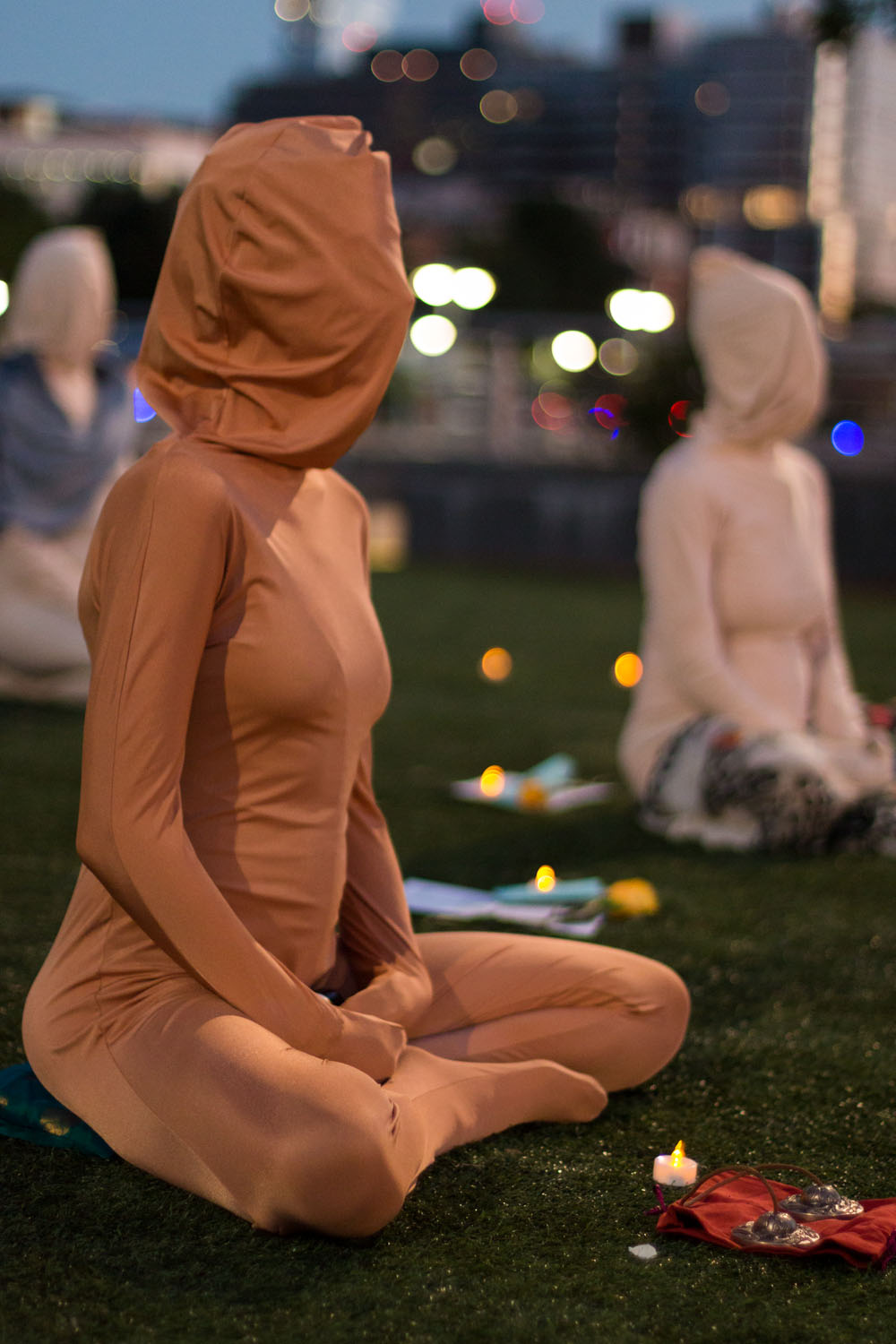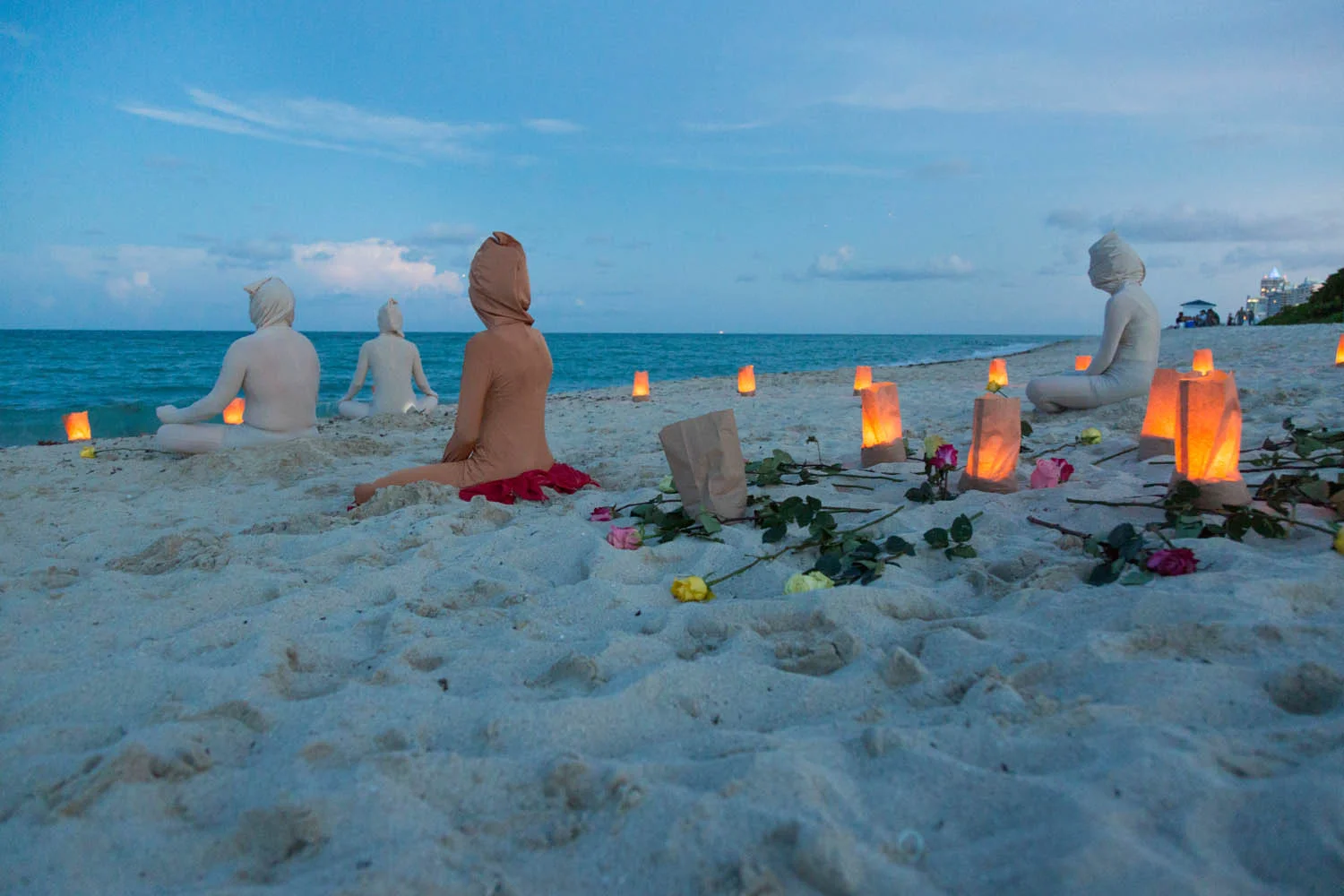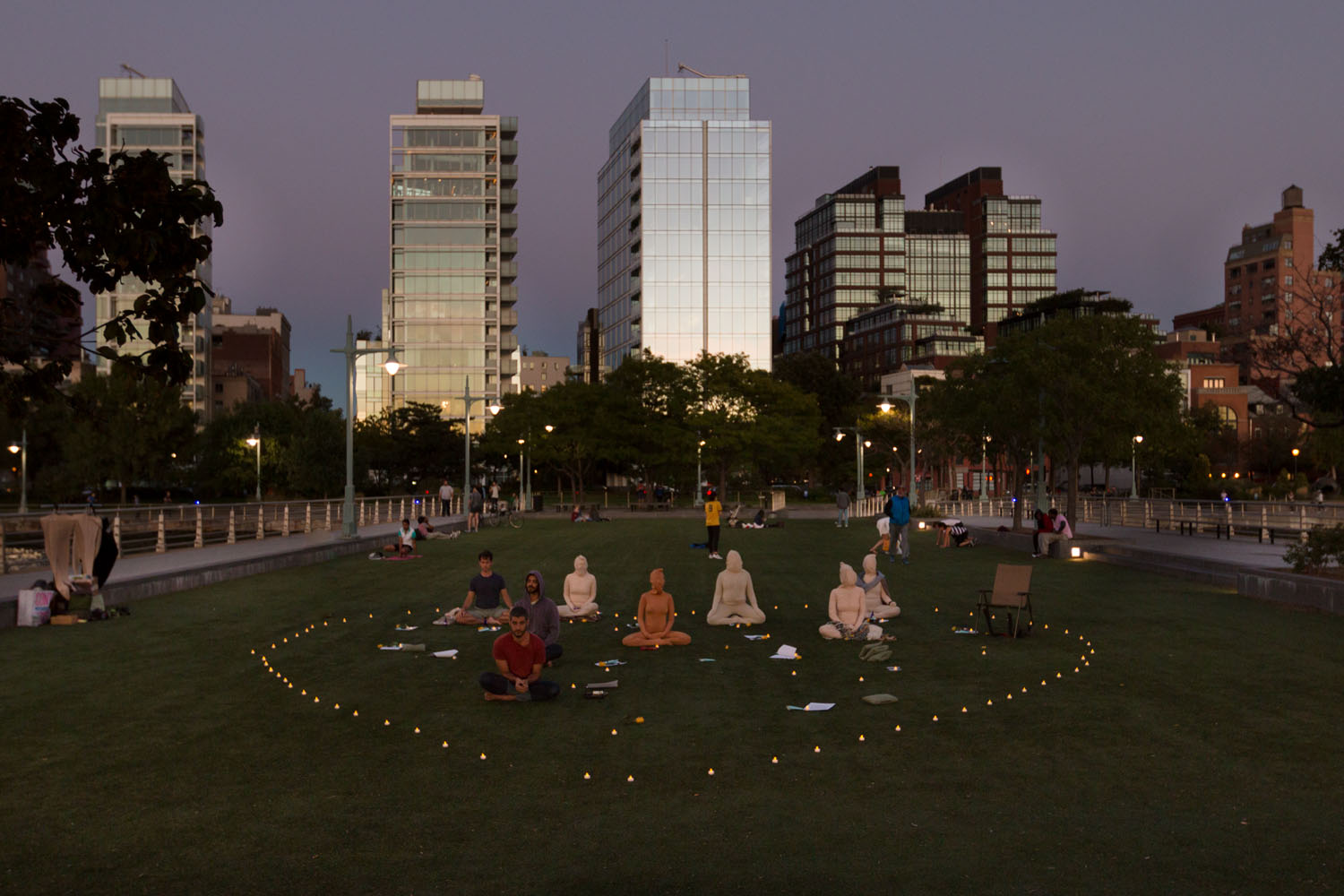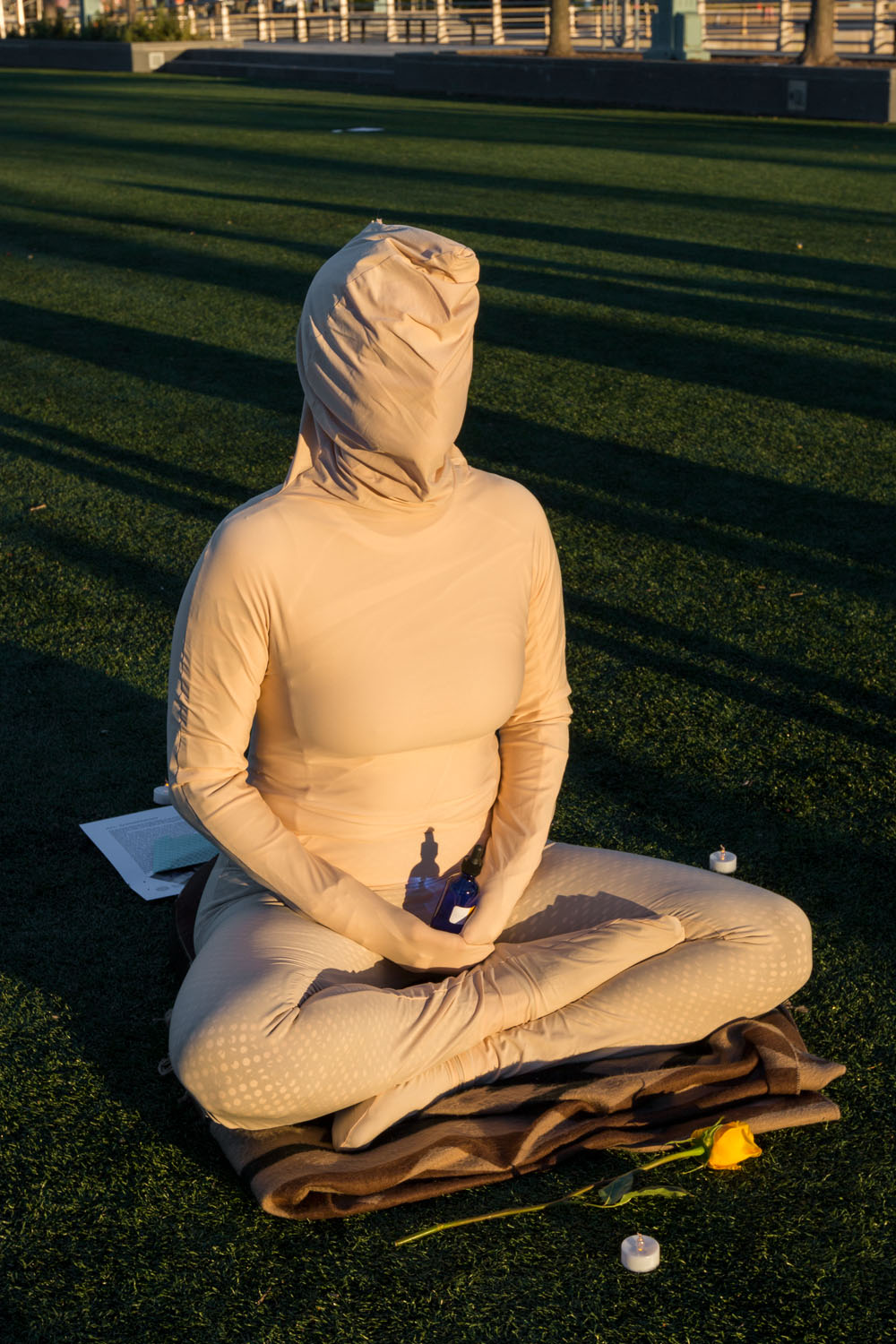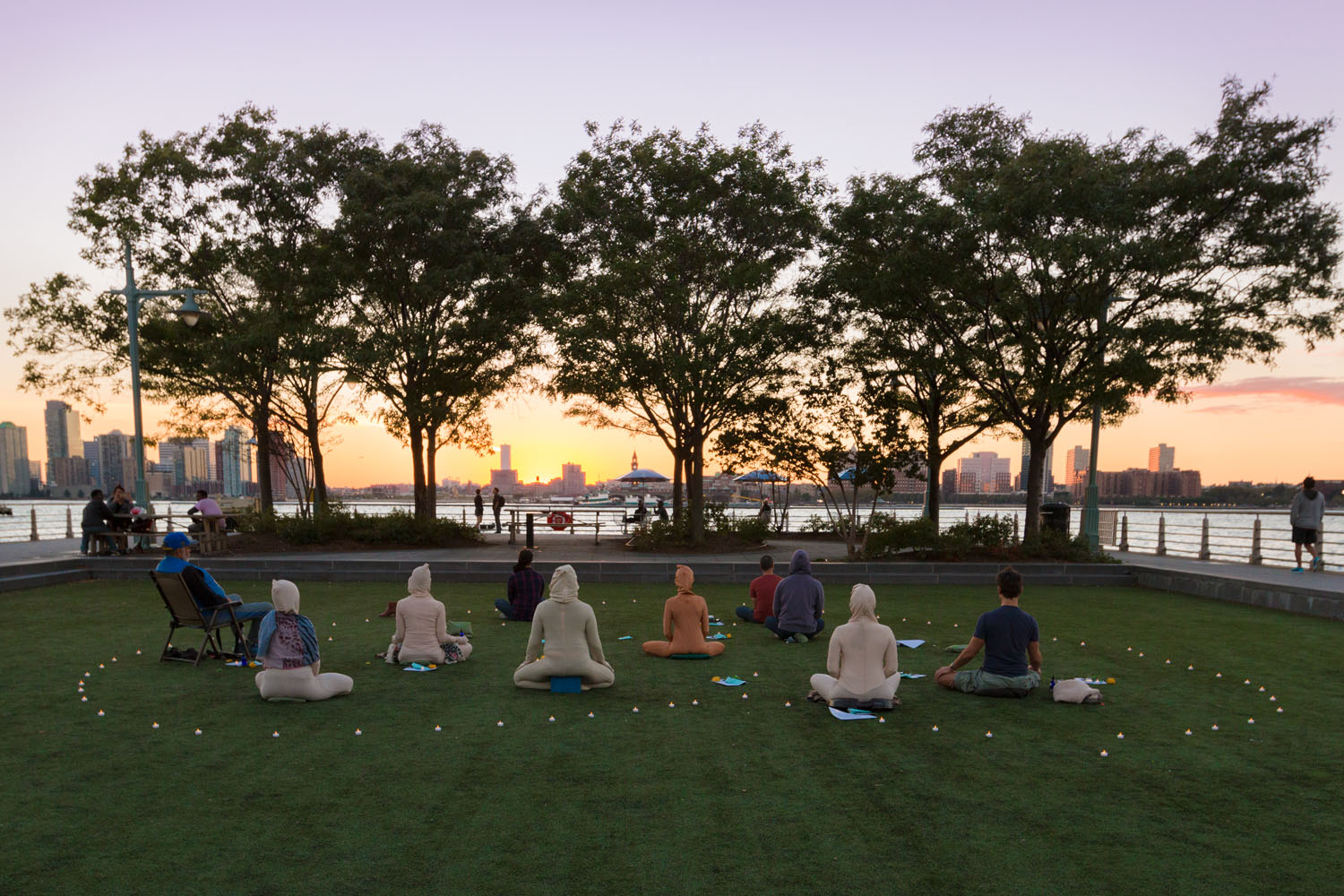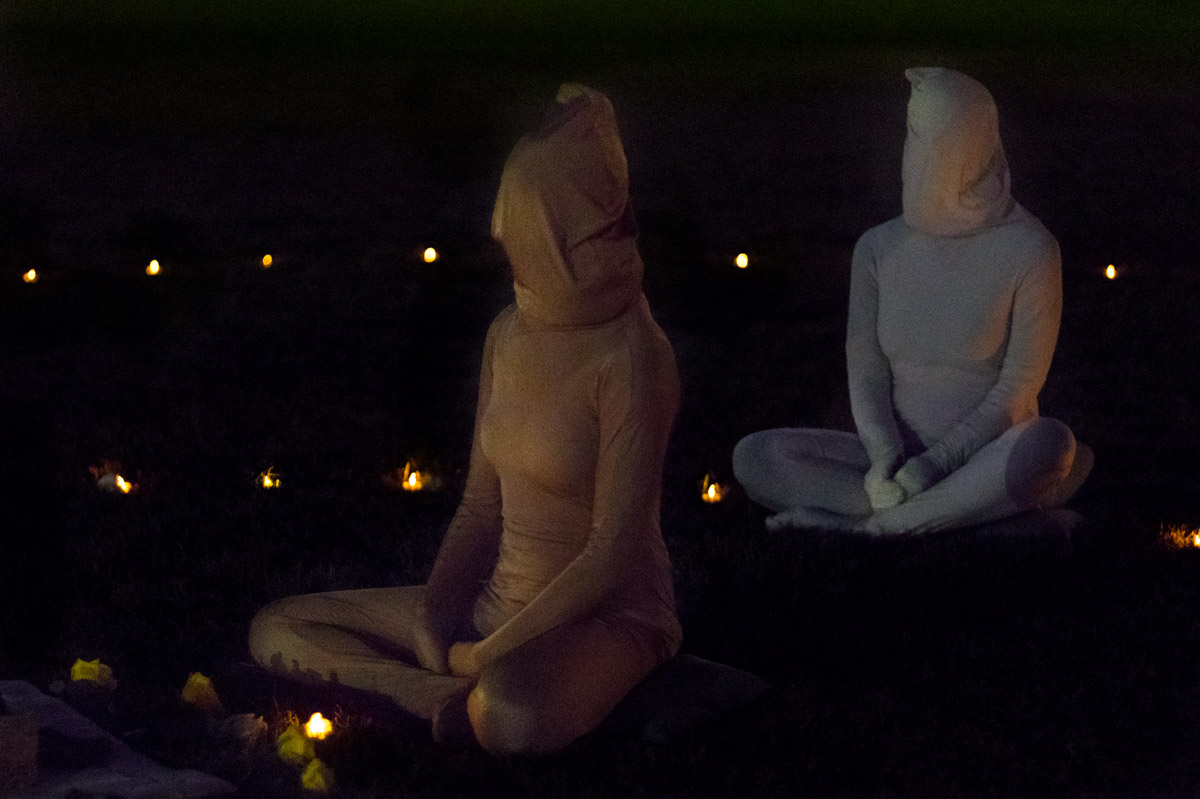
Jerusalem Online - The Deep end
2016 The Deep end by Shahar Sarig, Jerusalem - Online >Read Online
Reviewing Tal Eshed's, 'Dive In…' performance series and on the affiliation between art and meditation.
Art is often considered to have illusive, general purpose positive effect, a bit like say playing soothing music to plants to help them grow. Every now and again a new research will emerge to show through reviewing different changing variables the possibly constrictive effects of a seemingly irrelevant but ultimately nonhazardous course of action. These researches often embellish newspapers and websites and are formulated in a way that provokes thought although their usually not supported by an investigative approach. These sorts of articles seldom explain why say playing music to plants helps them grow thus promoting a vague notion of mystery by using a 'scientific' vocabulary.
Art like music is undoubtedly important, essential and indispensable although it doesn’t always fit or conform to an axiom. The definitions and traits or art are always being discussed and negotiated, but still anyone who has ever made art (which is to say probably everyone) experienced some of its transformative features. The power to create, the serenity of focusing on your own thoughts and actions, and being able to change your perspective are just a few of the possibilities embedded in the process and the consumption of art. In many ways art and meditation have a vast common ground. They are both signified common practices, packed into more defined ceremonies and rituals.
Tal Eshed already has over two decades of artistic scholarly under her belt. Over the years she has refined her practice, exploring the connections between meditation and art. Recently she has returned to doing public performance pieces after years of exhibiting mostly video installations. In her recent works or events, she used 'meditation suits'; anthropomorphic body suits made out of a lycra fabric to engulf the participant as he or she practice alongside others an hour of silent meditation. The 'Dive in…' performances are held by water sources and mix healing rites and artistic research. Eshed herself leads these events, meditating closed eyed and tucked in one of the suits. So far after the first performance that was conducted in her NY based gallery, she has already done quite a few more of them in the public sphere.
How did the performance piece come about?
The performance and wanting to link the artwork with a more participatory process was in the back of my head for quite a while. It started at around 2005-6. I toyed with Ideas that have to do with design and clothes, specifically I was interested in making colorful swimsuits that convey a sort of 'mood'. During this period, I thought a lot about skin as sort of a buffer, a thing that separates the interior and the exterior. These parts are always engaged in a constant sort of layered interaction. The suits have been with me for a while and were used in different ways in other artworks in the past. Fabric can act as a sort of 'second skin' and is a great material to work with. The meditation suits are an equivalent of the exterior, a garment. It covers the body but it leads you to focus inwards, just like meditation does.
What was it like? Taking the performance piece out of the gallery?
It was a natural extension of the same process. For me, making art is almost like a byproduct of how I conduct myself. If I look at the path I treaded so far, I can't separate my artistic work form my personal development. It's mostly connected to trying to answer the same questions I always ask myself. Generally speaking, I feel like my work is more precise now, I'm more 'at home' with it. I always just want to figure out how to communicate it better. When it comes down to it, I treat it all like a sort of service, a communal thing. I try to figure things out and want to share what I discover.
So why is it important to maintain the tag or definition of 'art' or 'performance'? Why not just do an outdoors meditation event?
The context is art, I think in art terms. Not that it matters that much as a definition. I think art is all about inquiry and an inner search, it's also about creation and going through a process. I like the context of art but I don’t mind if people perceive it differently. Some people still don’t think that abstract paintings are art, or that Pipilotti rist's works are art. I believe art is a lot like meditation. It strives towards a sort of sublime, or an overview perspective. When you are in the museum and face a great work of art you forget about your desires, your anger and fears and confront something bigger then yourself. You're also connected to your body throughout breathing. It's very close to meditation because your consciousness reaches a form of unity.
But there Is still a personal side to it?
Yes. It still deals with the topics I'm interested in and that I have studied for years now. Its linked to one of my last works that was triggered by a near death experience I had. The doctors said I was unconscious for 45 minutes, but it didn’t feel that way. I think I felt the most conscious as I have ever been. It mostly reaffirmed what I already felt and got me to be more precise, like the message was more urgent or perhaps more collective.
How Is the documentation part of the work? it's an elaborate question with live performance pieces, but perhaps more so with a work like yours which deals with the here and now. The experience seems to be more substantial then the aesthetics.
Documentation isn’t the same as participating though it's still important to me. It's fascinating and almost subversive in a way since I don’t control the work itself. I create and choose the parameters, the why and when's, but during the performance I am completely focused on surrendering to the process and letting go. I think the documentation can be an extension of the work itself. The documentation also adds another layer of communication and translates the work. It's almost like subtitles in a way.
Since you're not looking around during the event, how do you feel when you see the documentation of these performances?
It's surprising, bewildering, like a looking at a living, transforming sculpture that is preforming here and NOW. The documentation gives that moment validation, the mark of memory, and a timeline.
Isn't it difficult to block the outside noise? Didn’t you want to stop and look how it's going?
I know I have no control, I do give instructions before we start. I can't and don’t want to direct people too much. So it's about individuals charging it with meaning. We're making a communal portrait. I meditate daily. I'm almost addicted to it and so are the people that I work with, but each individual that takes part goes through this 'initiation' during the performance. Some of them have no experience and had never meditated before. Each person brings something different to the overall experience. Overall it's like a lab, you can conduct the experiment and create the .settings but you aren't supposed to predict the outcome
How did people react to the suits?
Some people were more timid with the suits, but the overall response is that people felt they were somewhat comforting. It is a somewhat like being a fetus perhaps. The suits are devised that way, there are no details, no nuances. It helps delete these differences we are so accustomed to see.
Were you nervous during any of the performance pieces?
Maybe I was a tiny bit during the first night when I did the performance at the gallery. There were all the people I invited and It was hard for the first few minutes to remind myself that it's not about me, to not think about the guests I invited, and that I can't greet them and to not worry that they might be disappointed. It passed though, and It gets easier because it becomes almost like a role and then it's easier to let go and savor it.
And you get the feedback from the participants?
So far anyone who watched or participated went through an emotional, visceral response. After it was done we all sat for a while. I love that bit, when we all sit in the park and you start to return gradually to yourself, moving back outwards. You get reacquainted with all the rest of the activities going around, people jogging and doing outside activities and yet there is something that remains very still. After some time, I also get the personal input from people that I work with in these events and we discuss the details and share experiences.
What sort of things do you find yourself dealing with while doing the research and the production?
The preparations consist of a bit of everything. Some of it is technical like getting the suits ready. The production is not my favorite part. That’s when I'm trying to be as practical as possible. I usually start out by looking for water sources that will be pleasant to linger by. When I was devising The Previous performance at the Hudson I walked around for quite a bit each time, and sat with the suits in all sorts of spots to try and figure out what the best place would be. I must have some kind of personal heart connection to the place where I feel it can work.
What's next?
I'm always working on several things at the same time, but right now it's all about perfecting this work, and making these singular small scale performance pieces, trying to reach more people and more of these rare and magnificent moments and instances. I'm also exploring the combination of indoor and outdoor video installation performance that is taking this experience to deeper plains, it is still in process.
More info: TalEshed.com, Facebook: Tal Eshed Art, Instagram: TalEshedArt
Photos Miami: Jeff Lindsay; Photos NYC: Beatriz Meseguer onwhitewall.com
© Artwork by Tal Eshed all rights reserved

